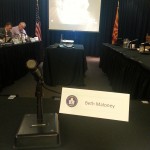As a special education teacher, one of my important responsibilities includes writing Individualized Education Plans (IEPs) for students. IEPs are educational documents that describe learning strengths/weaknesses, accommodations or modifications, special education goals and services, and other topics that relate to a student’s Free and Appropriate Public Education [FAPE]. Essentially, IEPs are exactly what they sound like: an individualized learning plan for each student. IEPs are written at least once per year–and often twice during important transition times like preschool to kindergarten or 8th grade to high school.
If you know a special education teacher, you might have heard a few complaints about the time consuming process of drafting, discussing, revising, and completing complex IEP documents. (I may have even complained a few times myself!) But for the most part, I love writing IEPs because it gives me a chance to think deeply about a student, craft a great plan for success, and document the best possible ideas to help the student make academic progress. More importantly, I really appreciate the time each year to meet with a family, talk in depth about where we are, dream about where we would like to go, and write the plan to get there together. Collaboration makes a huge difference, and I always find out such interesting information during IEP meetings.
I spend a lot of time on each IEP–between three and six hours (including the meeting time). I have always said that my IEPs are like “little love notes for kids.” When I write great IEPs, I know each student has the best plan for success over the next year, even if s/he moves out of my class. Since I work in a transient district where families move unexpectedly, descriptive IEPs are especially important. Clear documentation helps the next teacher set up a quick plan for success with decreased trial/error. Descriptive IEPs are also really important when I transition my students to kindergarten. Kindergarten is a very important year, and many of my students move to programs on other campuses for kindergarten. When I write a clear, descriptive IEP. my kindergarten-bound students are likely to have a smoother transition with teachers who know how they learn best. It’s kind of like passing the baton in a relay race–passing the child to the next educator requires careful attention to detail!
About a month ago, I had the pleasure of reviewing an IEP for a teacher on my campus who works with one of my previous students. (One of my leadership roles on campus involves reviewing and providing feedback about IEP paperwork to improve our compliance with state expectations). I always enjoy reading updates about previous students because it is exciting to see how they grow. In this particular instance, I was amazed to notice some information in the student’s IEP that I had written myself two years ago! There was clear documentation about some of her medical needs as well as thorough descriptions of accommodations and modifications that help her learn. It was a cool moment to realize the importance of learning these things about her and investing the time to write it in her IEP. I realized that descriptive IEPs really pay it forward for each student and their future teachers.
As I read through the IEP, I thought about the student and her academic career since she graduated preschool. In the last two years, she has had three teachers due to staff turnover. (Though rare, this kind of high staff turnover can happen in classrooms!) More than ever, I thought about the importance of writing descriptive, thorough IEPs. Despite the teacher turnover in her classroom, I noticed that a great deal of important information had passed through the IEP document over the past two years. IEPs really are love notes to kids (and their families!). As I read through the document, I felt pride and gratitude that I took the time to document her needs so clearly during kindergarten transition two years ago. It was a nice reflection to support a practice that I already believe in. Certainly, I will keep investing the time to pay it forward. An IEP is the beginning of an educational journey. When educators take time to document a clear path, they be paying it forward farther than they know!








